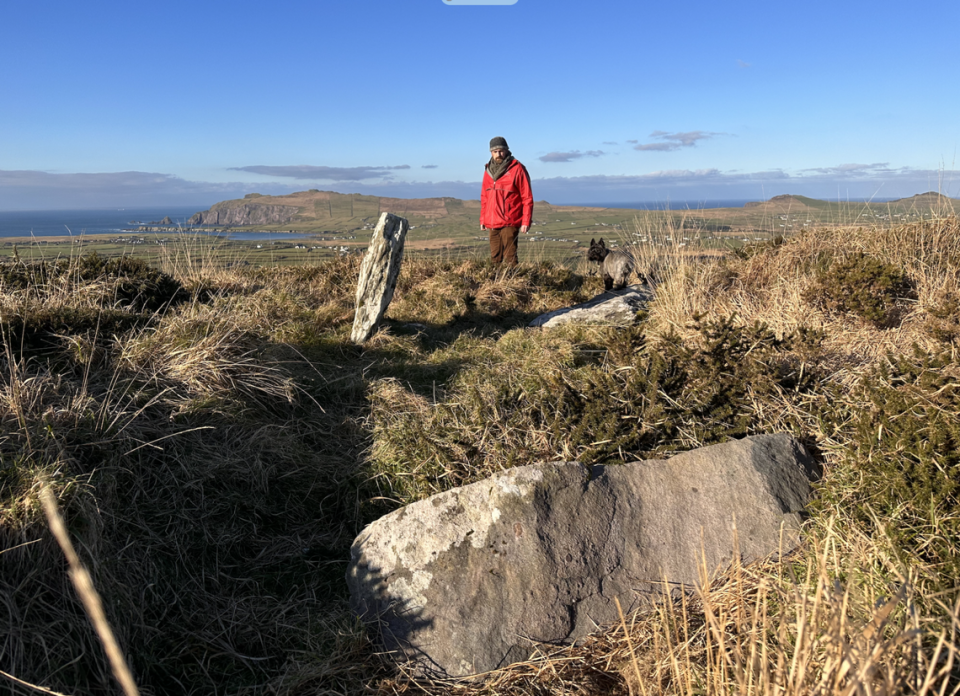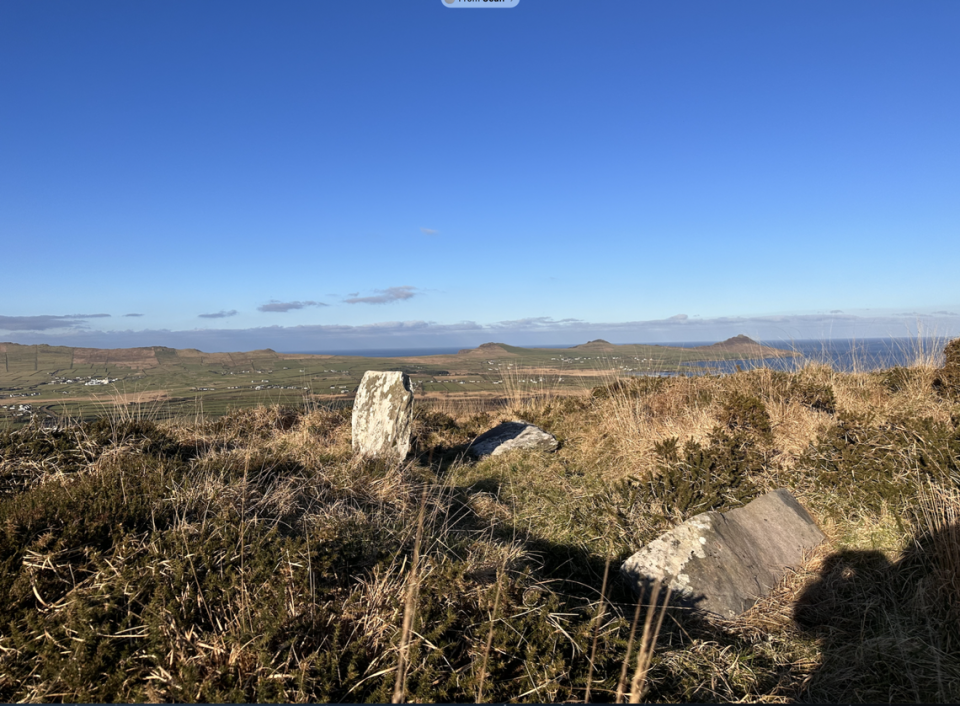4,000-year-old altar was ‘lost’ in Ireland. Then professor has ‘eureka moment’
When the COVID-19 pandemic hit Ireland in 2020, Billy Mag Fhloinn was one of many restricted to within just a few miles of his home.
Lockdown walks on the Dingle Peninsula soon became almost a ritual for Fhloinn — and they helped lead to a major discovery.
The folklorist and professor had recently come across a reference to an ancient Bronze Age tomb that once existed on the peninsula. The tomb, considered “lost” since 1852, was said to have stood on the same hill overlooking the village Baile an Fheirtéaraigh in West Kerry, where Mag Fhloinn lives.
“There’s a lot of sort of natural rock formations there, which could have been the place where the tomb was found,” Mag Fhloinn told McClatchy News in a Jan. 23 interview. “There was one which kind of caught my eye. And I had half an idea that this might be it.”
Now, two and a half years since Mag Fhloinn’s initial searches for the altar — known locally as Altóir na Gréine, or the altar of the sun — he’s finally taken a closer look at the rock formation.
For the last few months, Mag Fhloinn has been working on a mapping project of the peninsula with Sacred Heart University, taking photos and videos to create 3D models of the region in hopes of discovering ancient tombs, he said.
He decided to try modeling the stones he had seen during his 2020 explorations on the “off-chance” they were connected to the altar.
Mag Fhloinn brought data about the rocks home, entered it into his computer and began playing with the model by rotating the stones. That’s when he realized some of the modeled rocks matched the shape of an illustration of the tomb from 1838.
“I think that was my eureka moment. That was when I realized, okay, I really think I’m on the right track here,” Mag Fhloinn said.
After compiling his research, Mag Fhloinn sent his findings to the National Monument Service, and in December, an archaeologist verified that the rocks were in fact the ruins of Altóir na Gréine.

Another archaeologist who examined the site noted that vegetation near the rocks was different than the surrounding areas, indicating some kind of disturbance.
The remains include two of the altar’s original rocks — one in its original standing position and one that has the right shape, but in a different position.

The 1838 record of the altar, which comes from a British Lady’s travel journal, calls the tomb “a sun altar,” according to Mag Fhloinn. The name could have originated from a number of places, but one theory is that Catholic priests could have used the site to practice their religion when Catholicism was banned in Ireland.
“The fact that it’s Altóir na Gréine, the altar of the sun, is a curious thing,” he said. “Who knows, maybe there is an alignment originally with the rising sun on some particular day...there’s a sort of complex set of possibilities of how it might become associated with the sun.”
Experts have noticed trends in the direction that monuments face, so the direction of the tomb could have a “deeper meaning in the ancient past.”
“I’m intrigued with the idea of how people look at the landscape in the past and how they might have understood themselves in the world,” Mag Fhloinn said. “I guess I was just struck by the mystery of this thing being missing. And in a way, the drama of the location itself along that the ridge of that hill, and it was something that I just wanted to tie together. I just felt like there’s an unanswered question here.”
The Dingle Peninsula is on Ireland’s southwest Atlantic coast, about 200 miles southwest of Dublin.
‘Ancient jigsaw puzzle’ finally solved — and reveals ‘exceptionally rare’ Roman armor
1,700-year-old metal object — ‘one of archaeology’s great enigmas’ —unearthed in UK
Inscribed blade hid under grave for almost 1,900 years — until now. What does it say?

